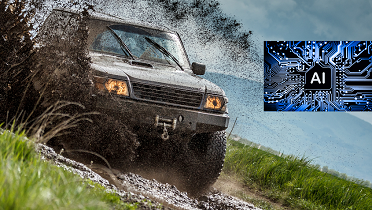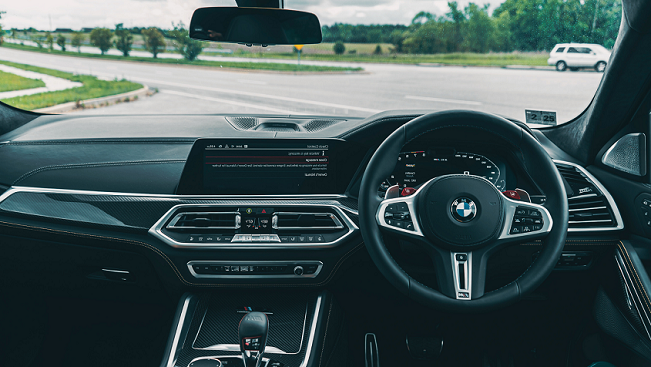
Adventure, freedom and getting out into the great outdoors are the hallmarks of off-road experience, traveling the roughing, often harsh, sometimes dangerous, places. Off-roaders are challenged by unpredictable conditions: rocky trails, sandy dunes, and anything in between. Precision, control, and adaptability are a must on the course. Artificial Intelligence (AI) is one of the most tremendous innovations in off-road driving as the technology evolves. Now, AI is reshaping what off-road enthusiasts can experience while out on adventures, by enhancing everything from vehicle performance to navigation and safety.
This article views how AI is changing the off-roading experience into something better including safer vehicles, better vehicle choices, and better ways to navigate.
What is AI in Off-Roading?
Artificial Intelligence, AI, is designating the approach to solve complex problems through the use of advanced algorithms, machine learning as well and data analytics, which empower systems to “learn” from the experience, adjust to new situations and make decisions on their own. Off-roading uses AI to enhance performance, ensure safety, and offer real-time guidance for a smoother, more efficient, and more enjoyable experience.
Key AI Technologies Enhancing Off-Road Vehicles
1. Terrain Recognition and Response (RTR) driven by AI
Adapting to different terrains is one of the biggest off-roading challenges. Each trail requires unique driving techniques, with features including mud, gravel, rocks, sand, or snow. AI technologies are capable of greatly enhancing the capability of the vehicle to recognize the type of terrain and adjust its settings accordingly.
Off-road vehicles operated with AI can use machine learning algorithms to learn and respond accordingly in real-time to different conditions. Sensors, cameras, and radar systems feed data to AI software, which analyzes the terrain and adjusts key parameters such as:
- Traction control: Tire pressure and torque distribution optimization across all wheels can be done with AI giving better grip and stability.
- Suspension settings: When that terrain gets rough and uneven, AI can build and adjust the vehicle’s suspension to help it take the shocks a bit better, for a smoother ride.
- Speed regulation: On treacherous paths, using AI, can adjust the vehicle’s speed to prevent slippage as well as control.
For example, on sandy dunes, AI can adjust engine power as it would decrease it to keep the tires from spinning too much. It adds torque on rocky trails for better climbing power to enable the vehicle to move through harsh landscapes without spooking a bit.
2. Artificial Intelligence-based Adaptive Suspension Systems
Off-road vehicles enable adaptive suspension systems to make another breakthrough. The vehicle’s suspension stiffness is changed in real-time by these systems depending on the type of terrain being navigated. The AI can adjust suspension settings to provide optimum comfort and stability while driving over rocks, deep mud or hard-packed smooth trails.
Here AI analysis of sensor data in real-time changes suspension damping and rebound to keep the vehicle in better contact with the ground and thereby lessen the probability of bottoming out or losing traction. For off-roaders, this is less stress and more confidence in developing the environment.
3. Real-Time Performance Optimization
Off-road vehicles also benefit from AI through its continuous optimization of the overall performance of the same. It can keep tabs on the vehicle’s (engine, fuel consumption, transmission and tires) and adjust the settings accordingly.
Its applications include; for instance, AI might manage the vehicle electricity distribution depending on a rise in steep incline to make sure enough torque can be utilized on the wheels requiring the additional torque. Better fuel efficiency, better performance and less wear on the vehicle’s components are the results.
AI can learn how people drive in the past, predict future conditions and tweak performance for different terrains, reaching optimal efficiency along the way.
Off-road Navigation Enhanced with AI
4. Off Road GPS Systems Powered by AI
But traditional GPS navigation systems rarely work when heading off driving. First, these systems may not factor in the unpredictability of natural trails or lack maps for remote areas that are accurate, and up to date. Ultimately, AI-driven navigation systems are changing the game of off-road travel with real-time dynamic routing.
Off-road GPS devices with AI power use satellite imagery, topographic maps, or user input to create comprehensive, accurate off-road trail maps. These systems can:
- Optimize routes: Provide routes along which the vehicle can travel in consideration of terrain difficulty, the weather and the driver’s experience level.
- Adapt to changing conditions: AI can recognize abrupt changes in trail conditions (weather, roadblock, vehicle performance) and update routes in real time.
- Predict trail conditions: Not only can AI predict future hazards based on data, but it can even sound alerts concerning things such as steep grades, water crossings or other danger spots.
These systems, armed with machine learning, get smarter and smarter over time, making a well-thought-out, tailored recommendation to your previous trips or off-road experiences to make your adventure safer and more efficient.
5. Hands-Free Navigation with AI-Driven Voice Assistants
They’re looking increasingly essential in the world of off-road driving; AI-powered voice assistants. With voice assistants, drivers can handle navigation, music and even communication system control without taking their eyes off the trail in rugged environments where using hands to interact with devices isn’t safe or practical.
For example, an AI assistant might give voice alerts for upcoming takes, rough trail pieces, or even changes in the weather. Drivers can also change routes, and make calls and requests for real-time trail updates, using voice commands. It translates to no distractions and pretty much no off-roading experience.
AI for Off-Roading to Improve Safety
6. Collision Avoidance Systems that are Powered by AI
There are several hazards of off-road vehicles that are off the highway and not immediately visible to the driver including fallen trees, rocks or deep water crossings. Collision avoidance systems assisted by AI use cameras, radar and machine learning to detect obstacles that are outside the line of sight of the driver.
These systems can:
- They give an audible or visual signal to warn the driver about imminent obstacles.
- Help to apply brakes autonomously in case of sudden hazard detection to avoid or at least reduce the incidents of collisions.
- Give the drivers situational awareness to be able to navigate narrow/difficult trails by providing context.
Putting this advanced safety technology to use in areas with dense woods and extremely uneven terrain can help drivers react faster and more accurately.
7. Vehicle Diagnostics & Predictive Maintenance
Nothing drives the development of AI faster than staying off and on the road—like when you’re exploring remote locations. With AI powering predictive maintenance, AI can detect potential mechanical issues before they become something more serious, alerting drivers to when they should be taken to repair or maintenance.
Let’s say that you can use AI to track engine performance, tire wear, and even transmission health, and warn the driver if any component isn’t performing as it should.
Why AI Matters in Off-Roading
However, as AI evolves we are opening the doors to endless off-roading possibilities. Future advancements may include:
- Fully Autonomous Off-Road Vehicles: What if we had vehicles that could creep around difficult terrains without the input of the driver? It isn’t far off when AI and robotics allow for the virtual presence of fully autonomous off-road vehicles that give more freedom to the adventurer.
- Enhanced AI-Powered Trail Sharing Communities: One day apps may be AI-enabled that can not only tell you what trails are best for your wheelbase but connect you with other users to see what they’ve found, whether that’s roadblocks, trail conditions, etc.
- Integrated AI Systems: With the development of vehicle-to-vehicle (V2V) and vehicle-to-infrastructure (V2I) communication technologies, AI has the potential to share real-time data between off-road vehicles for smarter decision-making and increased safety.
Conclusion
Artificial Intelligence rewrites off-roading experience, and it defines vehicle performance, safety, and navigation. Across the board, the benefits of AI have been poured into terrain recognition and adaptive suspension systems, safer GPS navigation, and more fun. With the progression of technology, off-roaders can anticipate even more advanced solutions that are going to reframe their outdoor trips into exhilarating rather than dangerous adventures.


